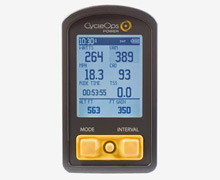It is actually fairly easy to “cheat” on an indoor cycling bike, unless you have power, because power gives you an objective measurement of your output. But indoor bikes with power are still not the norm. However, with some creative cueing, you can teach your students how to “pretend” they have power and to be aware of the tendency to “cheat” on a bike with a resistance knob.
This profile is primarily aimed at instructors who teach on bikes with resistance knobs, however, if you have bikes with gears, and even if you already have bikes with power, you can still get a lot out of this profile by modifying the cues to match the bikes you do have.


I taught this again the other day – it was quite hard to return to ‘baseline”! Keep this in mind – many people overestimate what they think they can handle – and when asked to return to that baseline after a harder segment, it becomes very apparent how hard it actually is!!
this is perfect for my group of riders on bikes without power meters but have access to bikes with meters in the larger fitness area and haven’t ventured on them for whatever reasons. i’ve been mentioning that word “power” every so often and hoping this will spark my riders to try the power bikes and see what they find on those. soon those bikes will be brought into the cycling room and this profile with give them a preview and taste and something to draw and reflect on.
thank you
Great descriptions.
Thanks as well for the list of 66-67 bpm songs. When I am looking for something in that range I know I’ll usually find something suitable by BT or E S Posthumus.
Check out the BT remix of The Doors’ Break on Through (To the Other Side). I use it for rides like the one you have described, toward the end when the riders are really warm and the resistance increases are challenging. The beat and message will take everyone to new heights.